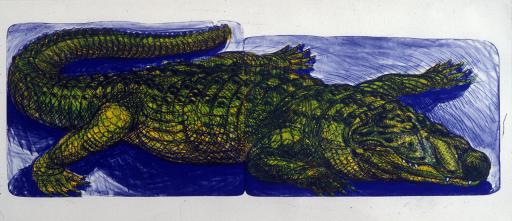Alligator, Luis Alfonso Jimenez
Artwork Overview
Luis Alfonso Jimenez, artist
1940–2006
Alligator,
1992
Where object was made: Lawrence, Kansas, United States
Material/technique: Prismacolor colored pencil; color lithograph
Dimensions:
Sheet/Paper Dimensions (Height x Width): 810 x 1975 mm
Sheet/Paper Dimensions (Height x Width): 31 7/8 x 77 3/4 in
Frame Dimensions (Height x Width x Depth): 36 1/2 x 82 x 2 1/4 in
Sheet/Paper Dimensions (Height x Width): 810 x 1975 mm
Sheet/Paper Dimensions (Height x Width): 31 7/8 x 77 3/4 in
Frame Dimensions (Height x Width x Depth): 36 1/2 x 82 x 2 1/4 in
Credit line: Museum purchase: Elmer F. Pierson Fund
Accession number: 1992.0010
Not on display
If you wish to reproduce this image, please submit an image request


